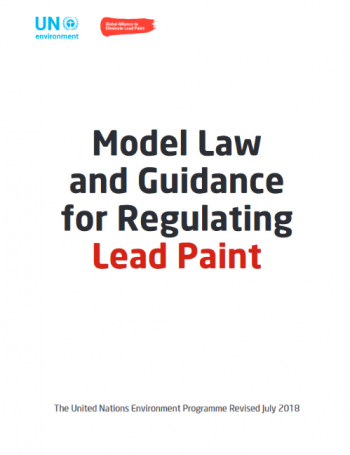Model Law and Guidance for Regulating Lead Paint
UN Environment, in cooperation with World Health Organization, United States Environment Protection Agency and other partners, has developed a model law and guidance in order to assist countries in establishing and implementing regulation on lead paint.
The purpose of this guidance is to assist countries to enact new laws (or to modify their existing laws) to establish a single regulatory limit on the total lead content in paints. The guidance describes the key elements of effective and enforceable legal requirements. It also provides a model law that incorporates the key elements and reflects the best approaches currently found in lead paint laws around the world.
Countries may use the model law to help develop their own laws, in accordance with existing legal frameworks and other national circumstances. For example, some countries use consumer protection laws that establish a limit on lead content in consumer paints (e.g. the USA), while others establish limits on lead in paints through a regulation or legal order under a chemicals management law (e.g. the Philippines) or as part of an environmental protection law (e.g. Nepal). Some countries have established lead limits through a national standards bureau (e.g. Kenya). The model law can be adapted to fit within a country’s legal framework but should retain the key aspects described in this guidance.

 Model Law (in all 6 UN Languages)
Model Law (in all 6 UN Languages)
